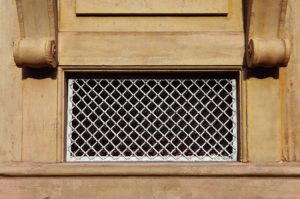
Although a big part of what defines how dry your basement will be is more structural, like good plumbing and impermeable walls, etc… there are a few things anyone can do that will go a long way in helping to keep the ambient crisp. A lot of the work that keeps the vast majority of the water out is done during the construction, things like gutters, and angling the terrain away from the walls, but once that’s done, what’ll decide whether or not your basement will be overcome by mold are the choices you take to maintain the environment.
Keeping it dry:
First things first, you can’t keep the basement dry if you keep bringing moisture into it. There are a lot of things that people don’t realize that spread a lot of humidity into the air, and undermine all your other efforts to keep things from getting dank. A really big one is dryers: it is in fact very convenient to keep the washing and drying machine in the basement, i’ll admit that, but the dryer pumps a lot of humidity into the air and that’s very problematic. Some people assume that because they have the exhaust facing out there’s no problem but that’s a big mistake. The dryer and washing machine are not airtight, so the entire time the machines are on they’re exchanging humidity with the ambient. It may not seem like a lot, but putting wet clothes in, then drying, then finally handling, and even ironing, all of these release a lot of humidity that tends to stay in the area and accumulate over time. There are other things like aquariums, plants, clutter (like wood) which can all store up humidity then release it over time into the basement.
Make sure it’s watertight:
The second thing you can do is prevent the moisture from ever entering your basement in the first place. Making sure everything is not only waterproof, but also airtight is an easy start. After months of rain humidity can seep in from the earth through the walls, what you can do to prevent this is paint your basement walls with water resistant pain. Another trick that’ll prevent the soil near the walls from getting as wet is installing extenders for your roofs downspouts so when it rains all that water isn’t being spilt right by the wall. Checking the floors and walls for cracks is also easy, and said cracks can be very easily mended with waterproof sealants you can find in any home-care or hardware store. Lastly regularly cleaning the gutters outside will help prevent flooding that occasionally happens during heavy rainfall.
Removing Residual humidity:
The last thing you want to do after going through this list is drying out the room one last time. Since you’ve taken all the steps you could by yourself to prevent moisture from entering, all that’s left is to remove any residual humidity then keep it that way. I believe the most important tool to dry out a basement is a dehumidifier; don’t be afraid to spend a lot on a good quality product that’ll have guaranteed results. This is the machine that’ll be taking care of any residual moisture that gets in, and preventing any type of buildup. You also want to check anything that involves water in your basement (bathroom, laundry equipment) has properly functioning exhaust systems. Lastly, there’s nothing like some fresh air to clean things out: install box fans on open windows to create an airflow and exchange the basements stagnant air, this will help forcefully remove stagnant air and bring in oxygen which helps prevent mold growth.
Following these simple steps you can reap tangible benefits over the years sparing your time, money, and the headaches that a flooded or moldy basement can bring.

